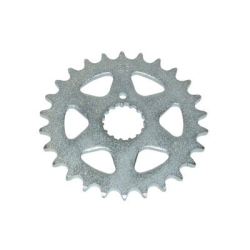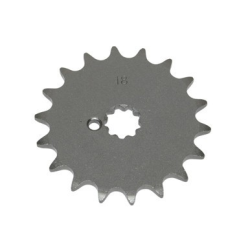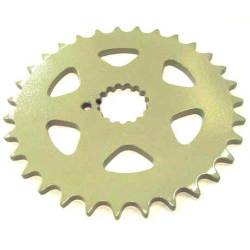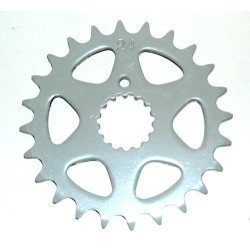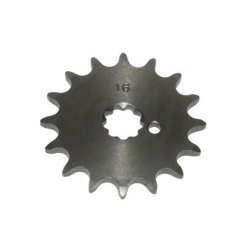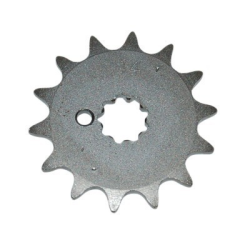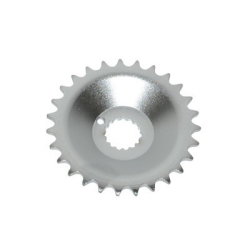The best scooter shop in 2025
Front Sprocket Moped
Front Sprocket Puch Maxi 18 Teeth
Voortandwiel Tomos A3/A35 28 Tands
Tomos A3/A35 31 Teeth Front Sprocket
Front Sprocket Tomos A3/A35 24 Teeth
Front Sprocket Puch Maxi 16 Teeth
Front Sprocket Puch Maxi 14 Teeth
Voortandwiel Tomos Revival/Youngster 27 Tands
Moped Front Sprocket: The Key to Performance
The front sprocket is a crucial part of your moped's drivetrain. It plays a vital role in transferring power from the engine to the chain, ultimately affecting your moped's speed and acceleration. In this text, we will cover the functions of a larger front sprocket and how a moped's gear ratio works.
What does a larger front sprocket do?
A larger front sprocket has a direct impact on your moped's performance. Here are the main effects of using a larger front sprocket:
-
Increased Top Speed: A larger front sprocket can increase your moped's top speed. This is because the larger gear allows the engine to make fewer revolutions to reach the same speed. This allows you to drive more efficiently, especially on long rides or highways.
-
Reduced Acceleration: Although a larger front sprocket increases top speed, it can also reduce acceleration. This means you need more time to get up to speed. For riders who drive a lot in the city or on shorter distances, this can be a disadvantage.
-
Better Fuel Efficiency: In some cases, a larger front sprocket can contribute to better fuel efficiency, as the engine can run at lower revolutions at higher speeds. This can lead to less fuel consumption on long rides.
-
Increased Loads: It is important to mention that a larger front sprocket can also put more pressure on the chain and gears. Ensure these parts are in good condition to avoid wear and tear.
How does a moped's gear ratio work?
The gear ratio is the ratio between the number of teeth on the front sprocket and the number of teeth on the rear sprocket. This ratio is crucial for determining your moped's driving performance. Here are the main aspects of the gear ratio:
-
Ratio Calculation: The gear ratio is calculated by dividing the number of teeth on the rear sprocket by the number of teeth on the front sprocket. For example, if you have a rear sprocket with 50 teeth and a front sprocket with 15 teeth, the gear ratio is 50:15, or simplified 3.33:1.
-
Influence on Speed and Acceleration:
- Higher Ratio (for example 4:1): This means you have more power and acceleration, but your top speed may be lower. This is ideal for city traffic or hilly terrain.
- Lower Ratio (for example 2:1): This means you can achieve more speed, but the acceleration will be slower. This is suitable for long rides on the highway.
-
Adjustments for Personal Preference: Riders can adjust the gear ratio based on their riding style and the conditions they usually ride in. Replacing the front sprocket or the rear sprocket can be done easily, but it is important to choose the right ratio for your needs.

 Nederlands
Nederlands